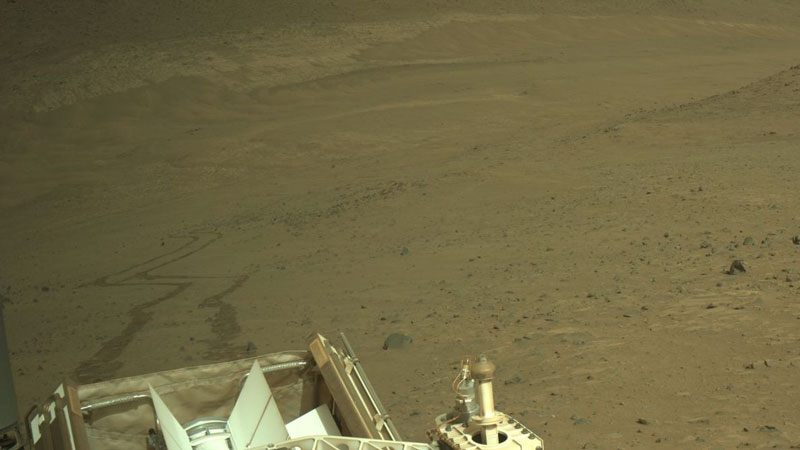On August 29, 2024, NASA’s Perseverance rover took its first selfie from the wall of Jezero Crater, which it began climbing on August 19. During this difficult journey, the rover must rise to a height of 300 m from the bottom of the crater and cross its edge. There he will be greeted by many promising debris and samples, many of which were left over from the fall of a large meteorite in this place 4 billion years ago.

Click to enlarge. Image source: NASA
«Given its [crater rim] wide sweep and the wide variety of rocks we expect to encounter and sample along the way, this may be the most ambitious campaign the team has undertaken to date,” NASA officials said in a statement about the fourth according to the campaign in the rover’s scientific program.
The hike does not promise to be easy. The NASA team doesn’t have much detailed satellite imagery of the route, so the rover will rely on its own vision and intelligence more than ever to navigate the Red Planet. Vision will be even more necessary for the rover to look out for the most interesting samples for analysis along the way. The slope may be littered with these. This is a kind of greeting from the distant geological past of Mars, and at the crossroads of eras – in the wall of a prehistoric lake. The discoveries can be very, very interesting.
At the very top, the rover team expects to discover both faults with ancient rocks exposed on the surface and, possibly, with probable traces of the prehistoric biology of Mars, as well as fragments of an alien from outer space – the remains of a meteorite or asteroid that fell in this place about 4 billion years ago. This event led to the appearance of the Jezero crater and the subsequent formation of a lake in it – then there was still water on Mars. The rover conscientiously packs samples and interesting findings into titanium tubes, and NASA hopes to return them to Earth for study no later than 2033. All this will not happen soon, if at all (NASA’s budget is sorely lacking). But even the rover’s journey through such remote places is already fantastic.